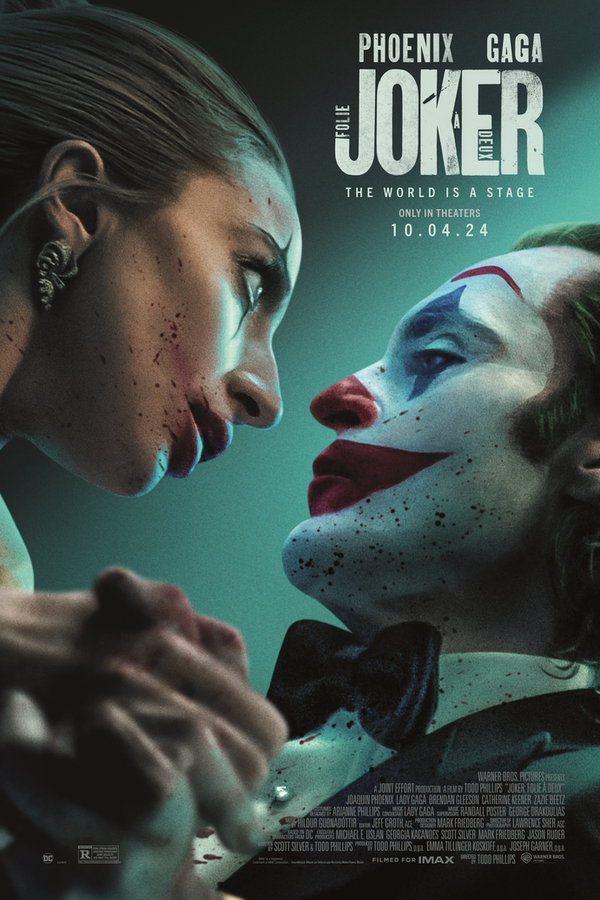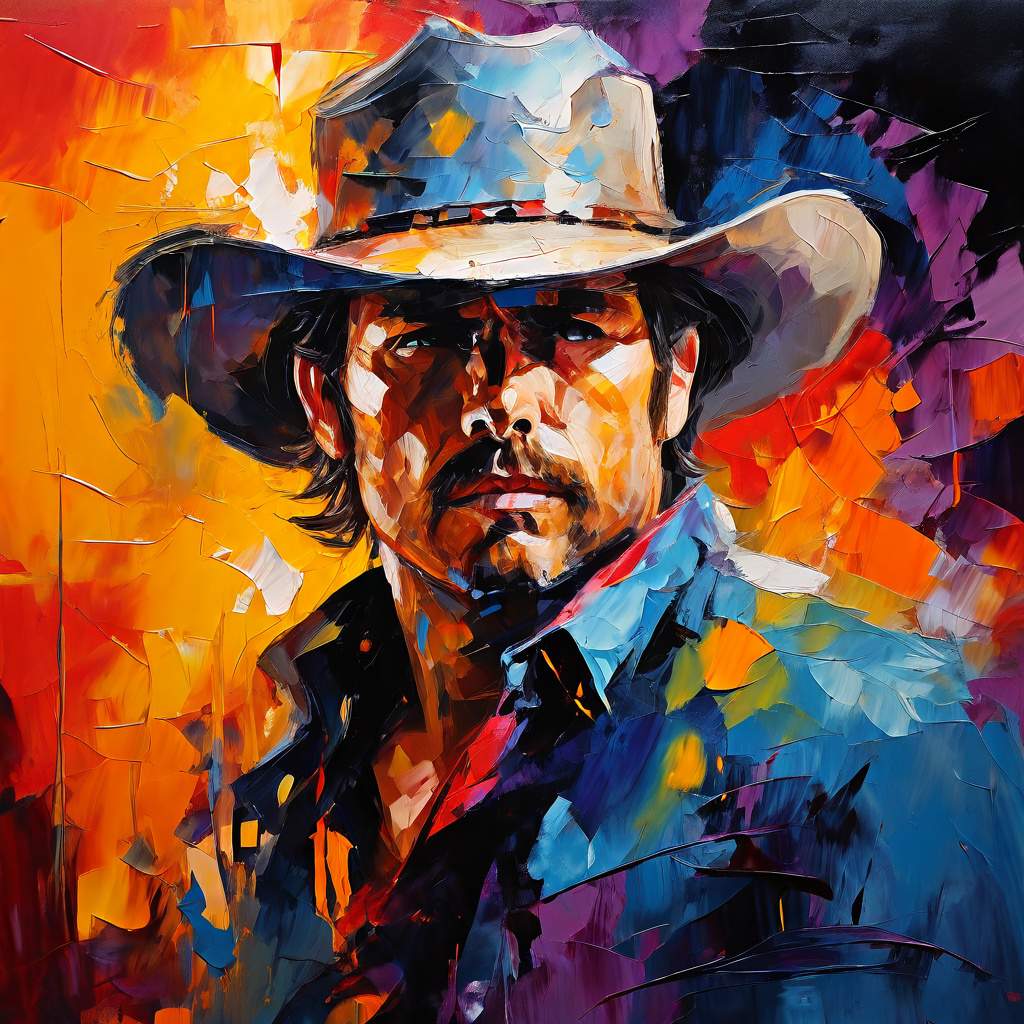What's After the Blog?
Explained
Joker 2 (2024) Explained: Breaking Down Arthur Fleck’s Return
Delve into the psychological unraveling and deeper meanings behind Arthur Fleck's journey in Joker 2: Folie à Deux.
October 4, 2024

Movies mentioned in this article
Joker 2 (2024) Explained: Breaking Down Arthur Fleck’s Dark Musical Journey
The much-anticipated Joker: Folie à Deux (2024) has arrived, offering a dramatic, musical, and often perplexing sequel to Joker (2019). With Joaquin Phoenix returning as the disturbed Arthur Fleck, and Lady Gaga joining the cast as Harley Quinn, fans were eager to see how this dark tale of Gotham’s infamous clown would continue. However, Joker 2 takes an unexpected turn—one that is filled with musical numbers, courtroom drama, and a shocking conclusion that leaves audiences questioning the nature of Arthur’s identity and the film’s message.
In this detailed breakdown, we’ll explore the critical scenes, themes, and mysteries of Joker 2: Folie à Deux, dissecting the film’s deeper meanings and what they reveal about Arthur Fleck’s tragic and twisted life. For more insights, head over to the What’s After the Movie blog, and visit the Joker 2 movie page for quizzes, links to other movie platforms, and more.
Arthur Fleck’s Transformation: From Joker to Tragic Figure
At the heart of Joker 2 is Arthur Fleck’s journey as he continues to grapple with his identity as Joker. In the first movie, we saw Arthur’s transformation from a downtrodden, mentally ill man into Gotham’s most notorious villain. However, in Joker: Folie à Deux, we’re taken on a different path—one that challenges the very notion of Arthur being a criminal mastermind. Instead, he is portrayed as a tragic figure, someone manipulated by society and misunderstood by those around him.
Arthur’s Favorite Song: “That’s Life” and Its Dark Symbolism
Throughout Joker (2019), the song “That’s Life” by Frank Sinatra serves as a recurring motif, reflecting Arthur’s emotional and psychological turmoil. It’s a song that captures the highs and lows of life, and by the time we reach the climax of Joker 2, it becomes the final sound Arthur hears as he dies. But why is this song so significant? In both films, Arthur clings to “That’s Life” as a representation of his own disillusionment. The song, with its upbeat rhythm masking its dark lyrics, perfectly mirrors Arthur’s descent into madness—a life filled with brief moments of hope, always followed by crushing defeat.
“You’re riding high in April, shot down in May…”
This lyric echoes Arthur’s trajectory, where every attempt to find joy or purpose in life is met with violence and despair. As he bleeds out in Arkham Asylum at the end of Joker 2, hearing the song once more, we realize the true extent of his tragic fate.
The End of Arthur Fleck: A Death in Arkham Asylum
The ending of Joker 2 is one of its most shocking moments. As Arthur lies bleeding on the cold floor of Arkham Asylum, having been stabbed by a fellow inmate, the camera slowly zooms in on his face. It’s a brutal and heart-wrenching moment that leaves the audience with many unanswered questions. Why does Arthur die here, and what does it mean for his legacy as Joker?
Is This the End of Joker?
One of the most perplexing elements of Joker: Folie à Deux is its refusal to solidify Arthur’s identity as the true Joker. Throughout the film, there are hints that Arthur may not be the infamous Clown Prince of Crime from the Batman mythos, but rather, a tragic figure who adopted the persona temporarily. This theory is reinforced by the film’s ending, where Arthur dies at the hands of another inmate who seemingly takes up the mantle of Joker by carving a grotesque smile into his own face.
Joker’s Trial: Putting Joker (2019) on Trial
A significant portion of Joker 2 revolves around Arthur Fleck’s trial, which serves as a metaphorical examination of the reception of Joker (2019). In this film, we see two opposing views on Arthur’s character: one side views him as a dangerous criminal who needs to be executed, while another side, represented by his fans, sees him as a misunderstood hero. This division mirrors the reactions to the original Joker film, which was both praised for its artistic merit and criticized for its potential to inspire violence.
Harvey Dent’s Role in the Trial
One of the standout characters introduced in Joker 2 is Harvey Dent, portrayed as the young prosecutor determined to see Arthur executed for his crimes. Dent’s portrayal in the film serves as a mirror to the critical reception of Joker—he represents the harshest critiques of Arthur’s actions, viewing him as nothing more than a monster who deserves to die.
Harley Quinn: An Unexpected Addition
Lady Gaga’s portrayal of Harley Quinn—here known as Lee Quinzel—is a pivotal part of Joker 2, but it’s not the Harley Quinn fans may have expected. In this version of the character, Harley is not the whimsical, chaotic sidekick of Joker, but rather a manipulative figure who sees Arthur as an opportunity for personal gain. Their relationship, while romantic in some scenes, is ultimately one of exploitation. Harley abandons Arthur when he confesses that his Joker persona was never real, leaving him to die alone in Arkham.
A Twisted Romance
The relationship between Arthur and Harley is filled with musical duets and sequences that blend their tragic love story with old Hollywood charm. However, as the film progresses, it becomes clear that their romance is based on lies and manipulation. Harley is not the devoted partner we’ve seen in other iterations, but a symbol of the toxic fandom surrounding Arthur’s Joker. By the end of the film, she abandons him, further reinforcing Arthur’s isolation and ultimate demise.
The Role of Music: Why Make Joker 2 a Musical?
One of the most talked-about aspects of Joker: Folie à Deux is its unexpected decision to become a musical. Fans of the original film were surprised by this creative choice, but in many ways, it reflects Arthur’s distorted view of reality. The musical numbers, often featuring Arthur and Harley singing old standards, serve as a way for the film to convey the characters’ inner worlds. However, as the musical numbers increase in frequency, they also underscore the detachment from reality that both Arthur and Harley experience.
The Absence of “That’s Life”
Interestingly, despite the abundance of musical numbers, Arthur never sings “That’s Life,” the song most associated with his journey in the first film. Instead, the song only plays during key moments, such as the final scene where Arthur dies. This absence is significant because it symbolizes Arthur’s loss of control over his own narrative—he no longer dictates his own fate, and the music serves as a reminder of the tragic inevitability of his story.
Conclusion: What Joker 2 Ultimately Reveals
Joker: Folie à Deux is a bold and often polarizing sequel that strips away the comic book mythos surrounding Joker to reveal the fragility of Arthur Fleck’s character. By the end of the film, Arthur is not the Clown Prince of Crime, nor is he a symbol of rebellion—he is a broken man, misunderstood by society and abandoned by those who claimed to love him. The film’s exploration of mental illness, societal alienation, and the dangers of idolizing broken figures is both profound and deeply unsettling.
For more insights into Joker 2, including interactive quizzes and detailed movie summaries, visit the Joker 2 page on What’s After the Movie. Whether you’re looking for links to other movie providers, or more reviews and explainers, our site offers a comprehensive look into this unforgettable film.
More Reviews and Opinions on Joker: Folie à Deux
If you’re looking for more reviews and opinions on Joker: Folie à Deux, check out the following sources. And remember, all of these details and more can always be accessed through the official movie page on What’s After the Movie, where we compile the latest reviews, quizzes, and additional insights for you:
- Metacritic: A compilation of critic reviews and user ratings.
- Rotten Tomatoes: See how Joker 2 stacks up according to the Tomatometer and audience reviews.
- IMDb: User ratings and detailed movie information.
- Media Stinger: Find out if Joker 2 has any post-credit scenes or stingers.
- TMDb: Community ratings, reviews, and more.
- Wikipedia: Learn more about the making of Joker: Folie à Deux.
- JustWatch: See where you can stream or watch Joker 2 online.
- Box Office Mojo: Track the box office performance of Joker: Folie à Deux.
Continue reading

What's After the Movie?
Not sure whether to stay after the credits? Find out!
Explore Our Movie Platform
New Movie Releases (2025)
Famous Movie Actors
Top Film Production Studios
Movie Plot Summaries & Endings
Major Movie Awards & Winners
Best Concert Films & Music Documentaries
Movie Collections and Curated Lists
© 2025 What's After the Movie. All rights reserved.








